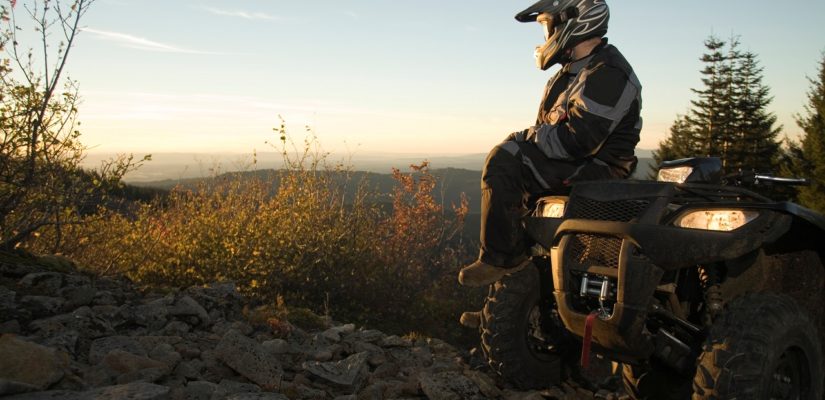
Common Mistakes Beginner ATV Riders Make: Part 1
Riding ATVs are fun as a barrel of gorillas, and twice as powerful.
It’s a good analogy as an ATV has the potential to seriously injure a driver if they aren’t schooled on the fundamentals of riding.
So with safety fundamentals in mind, here are the most common mistakes beginners make…
Getting The Wrong Size
ATVs come in various sizes so it is best to consider who is riding in relation to the size of the ATV.
A big and powerful ATV wouldn’t be best for a child because they wouldn’t be able to control it. This is also true for beginners. Heavier and more powerful ones can be too difficult to control.
Don’t rush the experience and prioritize safety first.
Immediately Cranking Up The ATV
Whether you are new at riding ATVs or has experience, it is best to get to know the ATV you are going to use before taking it to the trail. Different ATVs respond differently when it comes to their brakes, throttle or shifter.
Get a feel of how your ATV works and doesn’t crank it up after starting it. We all know that excitement but it would be best to spend a few minutes finding all the levers and foot pegs.
Try to position yourself properly and familiarize yourself with the controls before you give it a go.
Overconfidence
Even if you’ve driven a car or a motorcycle before, it is still best not to be overly confident. ATVs are different and it can be easy to lose control if you are over confident while riding it.
Don’t push yourself to your limits and just enjoy the ride. You’ll eventually get where you have to go and remember that you don’t have to ride to impress.
Remember: you’re here to have fun! Just enjoy the experience.
Not Considering The Center Of Gravity
Due to having four wheels, ATVs are presumed to be more stable than motorcycles. That’s true but that doesn’t mean you shouldn’t consider balance when using an ATV.
Wherever you go through turns, go uphill or downhill, having balance is key to making sure your ATV remains upright and doesn’t tip over. Your weight, the fluid in the engine and gas tank plus any load you have could shift through the terrain and it is important to know where to shift your weight accordingly.
Disregarding Your Surroundings
As we’ve said, ATVs are powerful machines and they can be used in all terrains. However, that doesn’t mean you should just go over everything without noticing your environment. Even if you have already gone through the same terrain, you should still consider the position of tree limbs, potholes or bumps that can bounce you off your seat.
Keep your eyes open and look out for other riders as well. There may also be pedestrians or obstacles in the trail and not seeing them or preparing for them can lead you to injure yourself and other people.
Also, there can be animals in the trail that can move unpredictably.
Driving On Wrong Trails
There are different trails available all throughout the country and all over the world. However, not all trails are suitable for ATVs. There are some that would be best for dirt bikes. ATVs are wider and would be best on wider trails. Smaller trails can get the ATV stuck or the rider injured.
Even if some believe that ATVs don’t really need trails and they can make their own path, that may not be advisable for beginner riders. ATVs are powerful but can be difficult to control especially if you don’t know how and if you are riding over difficult terrain. It is easy to become unbalanced.
Skipping Maintenance Procedures
ATVs also require maintenance just like any equipment or machine. In fact, ATVs require regular maintenance in order to function well. If you are unsure about the maintenance, check the owner’s manual.
Skipping maintenance procedures can lead to immediate damage of your ATV. It can also lead to long lasting damages that could require expensive repair or costly replacement of parts. Enjoy riding your ATV but also don’t forget to give your ATV some love by maintaining it properly.
Additions And Modifications
Additions and modifications make your ATV perform better but for beginners, it would be best to get to know your ATV without the modifications first. Adding more power to them without understanding their full capabilities and potentials would just be dangerous. It can change how the vehicle responds and handles. Don’t rush into mods, you can add them later as needed.
Final Words
The common mistakes mentioned here are only some. There are actually more and we’ll get to know them in part two of this article.
For now, take some time to learn these common mistakes to effectively avoid them.
